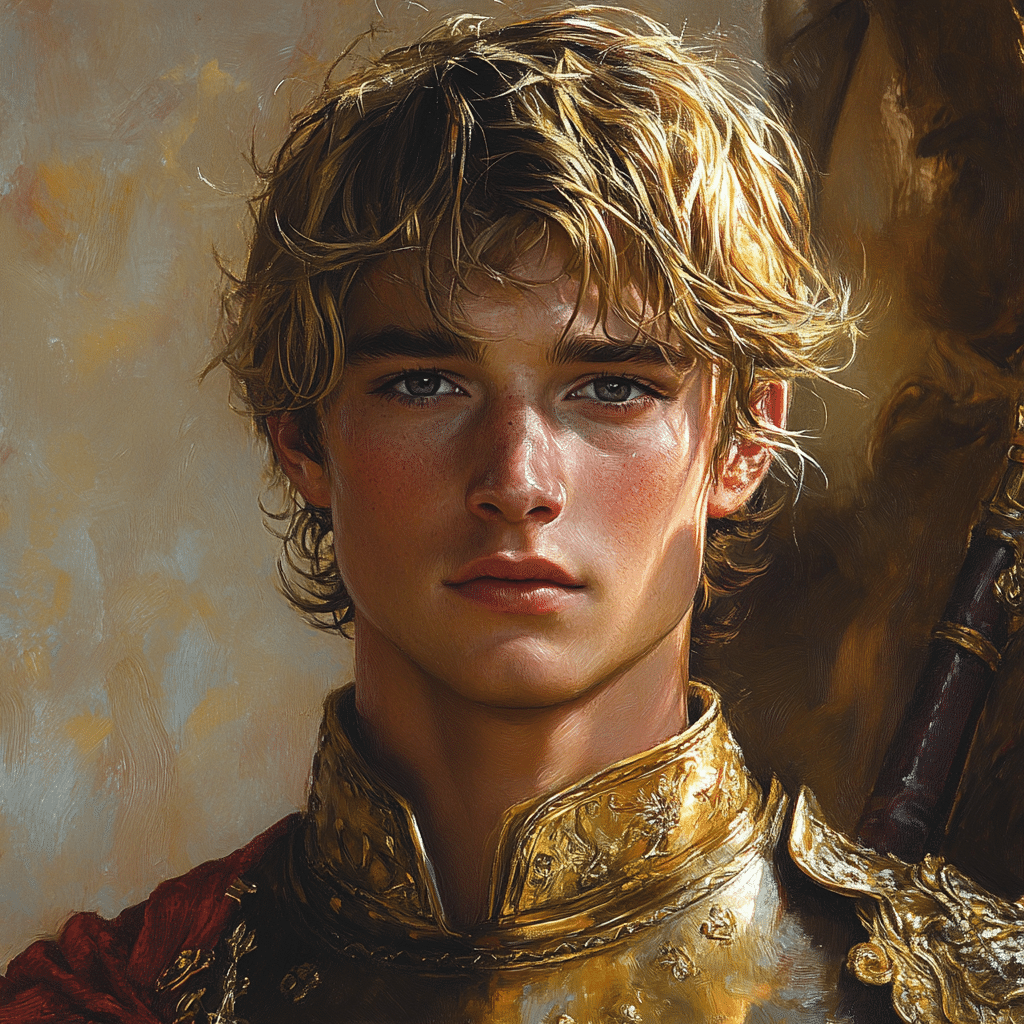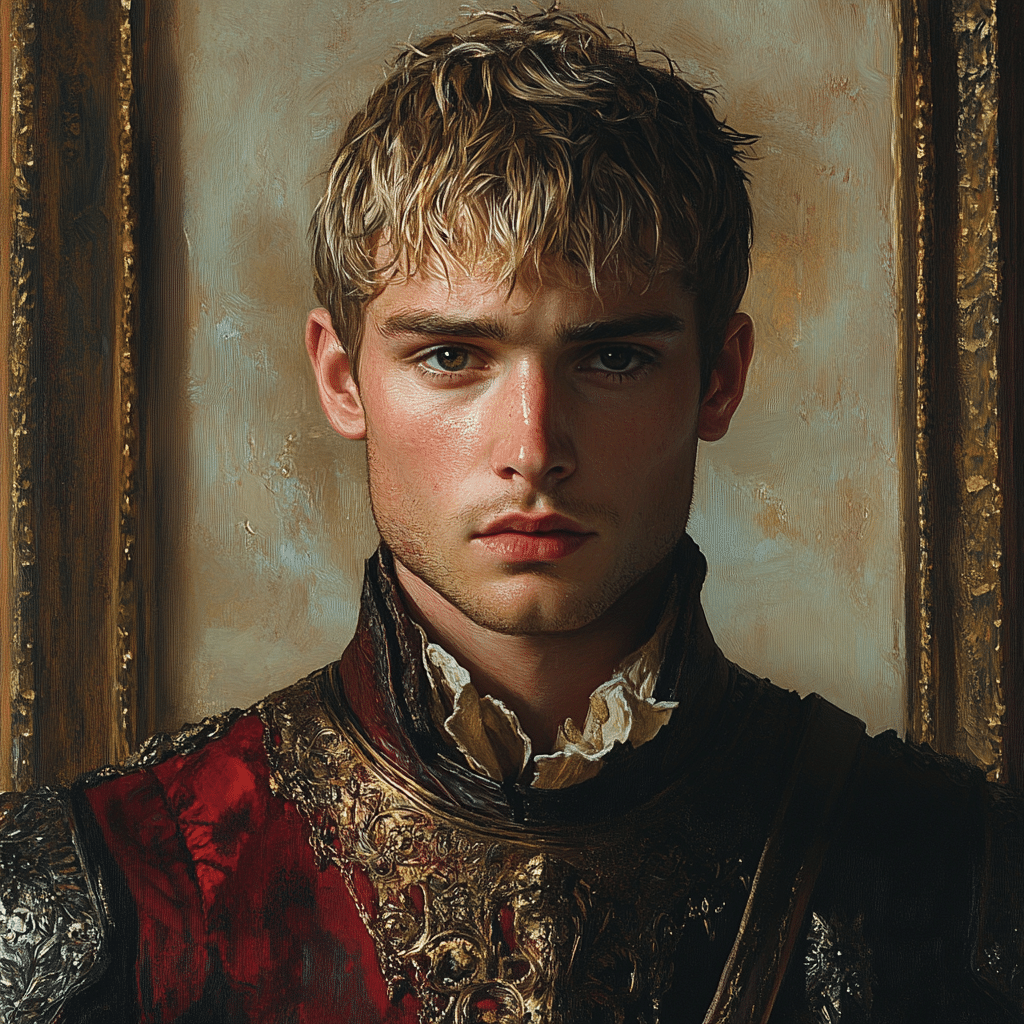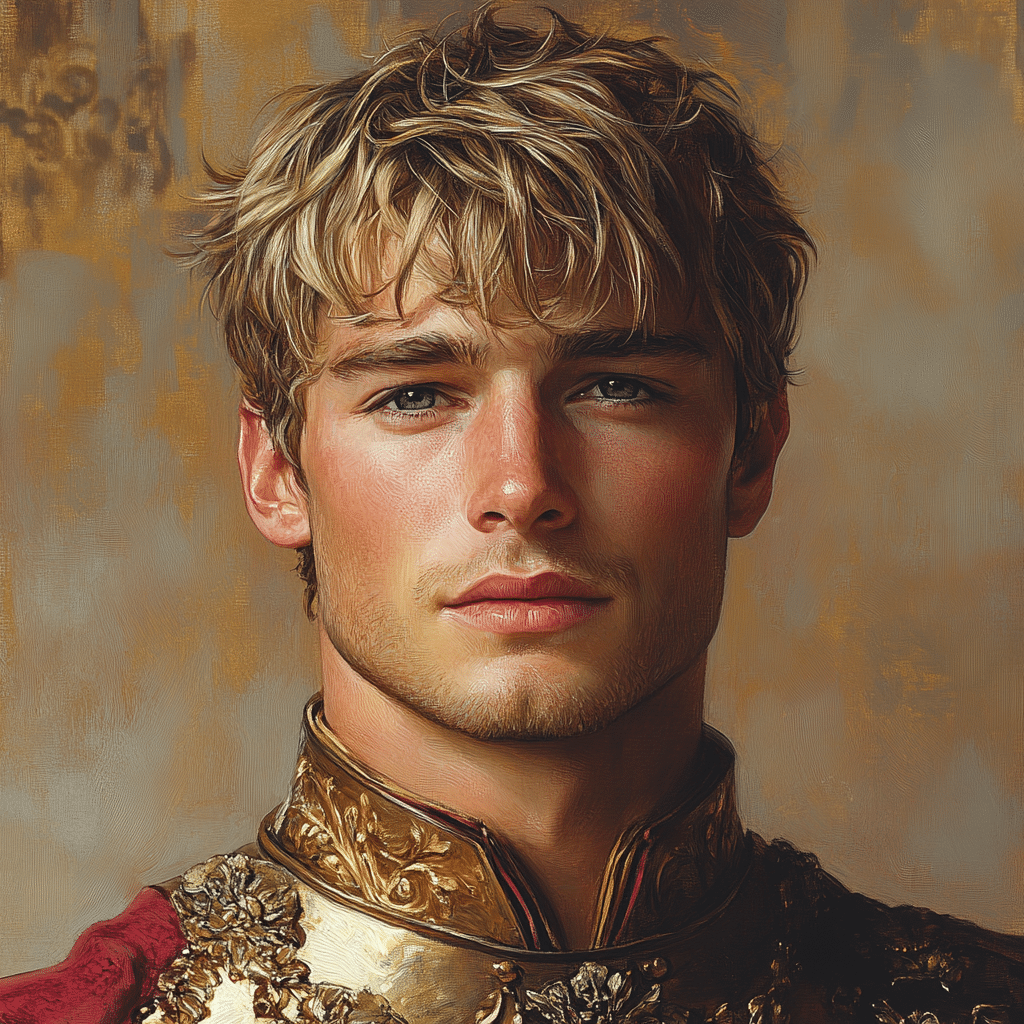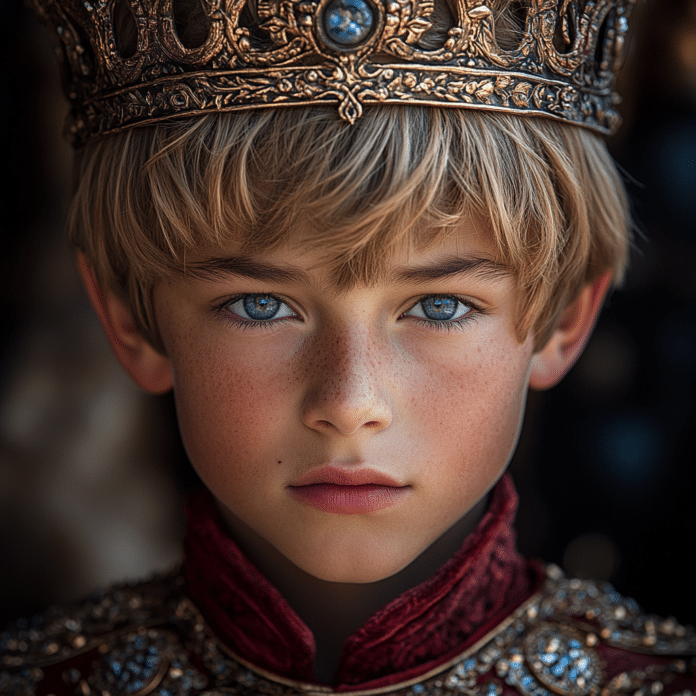Tommen Baratheon, a character woven into the intricate tapestry of George R.R. Martin’s epic series “A Song of Ice and Fire,” represents the unfortunate fate of youth ensnared in the ruthless game of thrones. His journey, marked by vulnerability, manipulation, and loss, serves as a poignant reminder of the precarious balance between innocence and power. Tommen Baratheon’s story unfolds against a backdrop of treachery and ambition, illuminating the struggles of a child thrust into adulthood before his time.
1. The Rise of Tommen Baratheon: A Look into His Coronation
Tommen ascended to the Iron Throne at a tender age, following the tumultuous death of his elder brother, Joffrey Baratheon. Cersei Lannister, his mother, played a significant role in his coronation, alongside the influential House Tyrell, who recognized an opportunity for manipulation. This pivotal moment encapsulates how a naive boy suddenly shoulders the weight of a kingdom, unprepared for a world of deception and betrayal.
His coronation set the stage for political maneuvering that would define his brief reign. The opulence of the ceremony, steeped in tradition, contrasts sharply with the chaos that unfolds soon after. As Tommen sits on the throne, one can’t help but notice the innocence in his eyes, a stark juxtaposition to the scheming minds around him. Key moments during this event highlight his initial vulnerability. His youth becomes evident as experienced adults guide his every decision, showcasing the fragility of leadership in a cutthroat society.
Tommen’s ascent underscores a fundamental question: how can a child lead a kingdom rife with power struggles? His initial interactions with characters such as Margaery Tyrell serve to illustrate the beginnings of this manipulation. The political landscape shifts beneath his feet as allegiances form and fracture, revealing the complexities of loyalty and ambition intertwined in the pursuit of the Iron Throne.

2. The Influence of Rhaegar Targaryen on Tommen Baratheon’s Reign
Rhaegar Targaryen’s legacy casts a long shadow over the realm, especially as it intertwines with Tommen’s rule. Rhaegar, often seen as a tragic hero, sought unity and peace for the Seven Kingdoms, a desire reflected in Tommen’s unsteady reign. This connection hints at the cyclical nature of power and its consequences, as Tommen grapples with the repercussions of decisions taken long before his time.
The Ripple Effect of Rhaegar’s Actions
Rhaegar’s tragic story aligns with Tommen’s struggles, illustrating how past choices shape future leaders. Despite Rhaegar’s intentions, his decisions created a legacy of chaos and conflict. Tommen embodies this turmoil, struggling to navigate a reality shaped by broken promises and bitter rivalries. The desire for a peaceful kingdom often clashes with the harsh truths of the existing power structures, leading Tommen to seek validation and strength in ways ill-fitted for a boy of his age.
The Burden of Expectations
The expectations placed on Tommen, akin to those faced by Rhaegar, are daunting. Where Rhaegar sought redemption through love and unity, Tommen often seeks approval, especially from Cersei, whose ambitions overshadow his own. The influence of previous Targaryens looms large, serving as both a guiding light and a looming specter that defines his reign.
Tommen’s plight is, therefore, more than just a struggle for power—it becomes a quest for identity amidst the shadows of those who came before him. This constant push and pull can leave anyone feeling lost, especially a young king navigating the treacherous waters of Westeros.
3. The Role of Rhaena Targaryen: A Queen’s Perspective
While Rhaena Targaryen herself does not emerge prominently in the series, her archetype subtly influences the perception of female authority within the kingdom. Throughout his reign, parallels drawn between Rhaena and the women in Tommen’s life reveal much about the power dynamics at play. Cersei and Margaery, both seasoned players of the game, often embody the strength and struggle associated with female rulers navigating patriarchal structures.
Rhaena as an Archetype of Female Authority
Rhaena serves as a representation of the strength found in female authority, showcasing how women can wield power effectively in an unforgiving landscape. As Tommen’s alliances deepen, the perception of women as both manipulators and pawns becomes clearer. The relationship dynamics shift, forcing Tommen to reckon with the roles women hold in not only his life but the fate of the realm as a whole.
The Manipulation of Youthful Innocence
Tommen’s interactions with Cersei and Margaery highlight a recurring theme: the fragility of youthful innocence manipulated by powerful forces. He often finds himself ensnared in their ambitions, reflecting how those around him exploit his vulnerability for personal gain. This exploration of female influence in Tommen’s reign offers insight into the nuanced roles women play in the overarching narrative of power and control.
Tommen’s experiences resonate beyond the realm of fantasy, prompting reflection on how youth and innocence are often victims of calculated ambition. It’s a stark reminder of the struggles faced by young leaders—facing pressure from all ends while trying to navigate their moral compass amidst the chaos.

4. A Young King’s Struggles: The Impact of Aemon Targaryen
Aemon Targaryen, a member of the Night’s Watch, offers an interesting contrast to Tommen’s experiences. Bound by duty yet driven by longing, Aemon’s character represents the burden of legacy, mirroring Tommen’s own struggles as he grapples with his identity amidst familial expectations. Both characters reveal the psychological landscape governing their decisions, illuminating the inner turmoil of young men striving for meaning in a world fueled by ambition.
Aemon’s Legacy vs. Tommen’s Reality
Aemon’s deep-seated sense of duty often leads him to sacrifice personal desires for the greater good. In contrast, Tommen yearns for acceptance and love, often putting aside his responsibilities in favor of his emotional needs. This dichotomy exemplifies the emotional strain experienced by young rulers, where the quest for acceptance can lead to poor judgment and, ultimately, tragedy.
The Burden of Identity
As Aemon seeks solace in his past, Tommen grapples with the expectations placed on him as a Baratheon king. The weight of family legacy looms over both characters—one emboldened by duty, the other shackled by desires that conflict with his responsibilities. The exploration of identity becomes a recurrent theme, posing crucial questions about leadership and self-discovery.
Through their intertwined journeys, the storytelling reveals both challenges and triumphs faced by those in power, offering invaluable lessons about responsibility, legacy, and the choices that shape our futures.
5. The Fall of Tommen Baratheon: Lessons from Rhaegar and Aegon the Conqueror
As Tommen’s rule becomes overshadowed by external chaos and his inability to assert authority, critical lessons in leadership emerge when contrasting him with figures like Rhaegar Targaryen and Aegon the Conqueror. Aegon unified the Seven Kingdoms through conquest, presenting a stark contrast to Tommen’s quest for peace through diplomacy, a strategy that ultimately fails him.
The Comparison of Leadership Styles
Tommen’s struggles reveal the need for a delicate balance between compassion and strength, especially in a world built on betrayal. This lack of assertiveness often results in him being viewed as weak, exacerbating the plots against him.
A Cautionary Tale
Tommen’s fall from grace serves as a cautionary tale about the limitations of innocence in governance. Being well-intentioned is simply not enough when surrounded by ruthless adversaries. The tragic outcomes of his reign emphasize that true strength requires not just a good heart but also a firm grip on the realities of power dynamics.
Despite his good intentions, Tommen ultimately finds himself a pawn in a larger game—cast aside as the political tides shift and grow tumultuous. The lessons gleaned from his rule resonate through the ages, reminding us that the path to leadership is not paved with noble intentions alone.
The Final Reckoning: Reflections on Power and Innocence
As Tommen Baratheon’s journey reaches its tragic conclusion, his story stands as a stark reminder of the heart-wrenching challenges faced by a child within the unforgiving landscape of Westeros. His downfall serves as an allegory for the perils of innocence corrupted by ambition. The echoes of his reign resonate long after his tragic exit; one learns that the relentless pursuit of power can lead to the greatest sacrifices—not for the realm but for the very soul of those who seek to rule.
Tommen’s legacy, fraught with loss and yearning for acceptance, encapsulates the notion that the fates of kings are rarely straightforward. They become shadows of the choices made by their predecessors, where ambition often blinds the innocent while sacrificing their purity in the struggle for power.
In a world gripped by ambition and adventure, Tommen Baratheon’s journey invites us to ponder the intersection of power and innocence. While he remains a poignant symbol of lost potential, his story speaks to the eternal struggle to navigate the treacherous waters of governance, serving as a timeless reflection on the duality of human ambition.
Tommen Baratheon: The Tragic Journey of a Young King
The Innocent Monarch
Tommen Baratheon, the youngest son of Cersei Lannister and Robert Baratheon, had quite the burden placed on him at an early age. With the Iron Throne at stake and so many forces vying for power, it’s fascinating to think about how he managed to grow up in such a chaotic environment. Ironically, he found himself caught in the crossfire of political ambitions much like young athletes find themselves in intense competitions, like in the recent match of inter miami vs newells. Much of Tommen’s rule was shaped by the actions and decisions made by those around him. He struggled to assert his authority, making him a figure symbolic of innocence amidst a treacherous game.
The Dangers of Power
Tommen’s rise to power came after some heavy losses in his family, pushing him into a role he wasn’t ready for. His kingship reminds us that the fight for authority can be perilous, almost like the ups and downs one might feel when discovering signs you’re going to win the lottery—it promises excitement but also comes with an unpredictable twist. Despite being king, he often seemed more like a puppet than a ruler, manipulated by powerful figures like his mother and the High Sparrow. It’s a classic example of how appearances can be deceiving; behind the iron walls of the Red Keep lay a young man yearning for genuine connection and guidance.
The Fate of a King
As Tommen navigated his tumultuous reign, his eventual suicide starkly illustrated the heavy weight of the crown. His tragic end raises questions about leadership and the expectations placed upon young figures in power. Lamentably, his story reflects countless real-life situations, much like the underlying themes in National Lampoon’s European Vacation—the irony and absurdity that often come with ambition and family loyalty. One could argue that Tommen’s life choices were akin to selecting the right kind of wood for a pit fire; he just needed a little more time to figure out what would truly burn bright, such as mahogany teakwood.
In his tragic journey, we see a poignant reminder about the fragility of youth and the harsh realities that come with responsibility. Tommen Baratheon’s life may seem like just another story in a vast tapestry, but it resonates deeply with anyone who understands the plight of growing up too fast. Just imagine the lessons he might have learned had he lived longer—lessons that might have helped avoid ending up, like many, as an emotional footnote in a history marred by ambition and betrayal.




